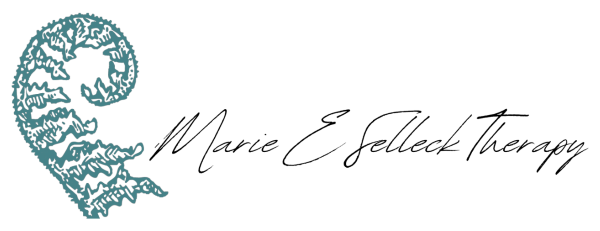Body Awareness in Brainspotting: Tracking Somatic Responses During Processing
When we process difficult emotions, our bodies speak a language all their own. In Brainspotting therapy, paying attention to these physical signals isn't just helpful—it's essential to the healing process.
What Is Body Awareness in Brainspotting?
Body awareness means paying attention to what's happening inside your body right now. It's noticing your heartbeat, your breathing, tension in your shoulders, or that flutter in your stomach. In brainspotting, these body signals aren't just random sensations. They're your nervous system's way of communicating important information about stored trauma and emotional wounds.
When we find a brainspot—that specific eye position where activation occurs—your body responds immediately.
During this processing, your body might respond in several ways:
Muscle tension or relaxation
Changes in breathing
Shifts in heart rate
Sensations of heat, cold, or tingling
Stomach discomfort
Tears or emotional release
These aren't symptoms to push away. They're messengers pointing toward areas that need healing.
Why Body Awareness Matters
Many people, especially those carrying shame or guilt, have learned to ignore their body's signals. They push down physical sensations just like they push down difficult emotions.
But survival mode isn't meant to be permanent. Your body remembers what happened to you, even when your conscious mind has moved on. Those stored memories create patterns of tension, hypervigilance, or emotional numbness that impact your daily life.
Learning to track what's happening in your body during Brainspotting serves several important purposes:
It provides data about your healing process. Physical sensations often signal when you're processing important material.
It helps you stay grounded. Focusing on physical sensations keeps you connected to the present moment, preventing you from becoming overwhelmed.
It builds self-trust. As you learn to recognize and respect your body's signals, you strengthen your relationship with yourself.
It accelerates healing. Acknowledging physical responses often helps the brain process emotions more efficiently.
Notice your heartbeat, breathing, tension in your shoulders, or that flutter in your stomach. These body signals aren't just random sensations. They're your body’s way of communicating important information about stored trauma and emotional wounds.
How to Track Somatic Responses
Tracking doesn't require special skills—just patience and curiosity. Here's what to pay attention to during brainspotting sessions:
Physical sensations: Notice changes in muscle tension, temperature, or energy levels. Does your breathing shift? Do you feel heaviness or lightness anywhere?
Movement impulses: Your body might want to move, shake, or change position. These impulses aren't random—they're part of your nervous system's natural healing process.
Emotional waves: Feelings often show up as physical sensations first. Anger might feel like heat rising. Sadness could feel like heaviness in your chest. Fear might show up as butterflies or shakiness.
Energy shifts: Some people notice tingling, vibrations, or changes in how alert they feel. Others experience a sense of expansion or contraction.
The key is observing without judgment. Your therapist will help you stay curious about these responses rather than trying to control or stop them.
Common Patterns in Somatic Processing
While everyone's experience differs, certain patterns often emerge during Brainspotting:
Waves of sensation. Physical responses typically come in waves rather than remaining constant.
Processing sequences. You might notice a pattern—perhaps tension builds, peaks, and then releases, often accompanied by emotional shifts.
Completion signals. Many clients report a sense of physical relief, deepened breathing, or muscle relaxation when processing is complete.
Incomplete processing. Sometimes your body signals that there's more work to do—through persistent tension or discomfort in specific areas.
Working Through Resistance
Many clients initially resist body awareness work. This resistance makes complete sense, especially if your body has been a source of pain, distrust, or doesn’t feel safe.
Shame often creates a wall between you and your body's messages. You might hear internal voices saying, "This is silly," "I should be stronger," or "I'm making this up." These thoughts are protective mechanisms, not truth.
Start small. You don't need to dive into intense sensations immediately. Begin by noticing simple things—how your feet feel in your shoes, the temperature of your hands, or the rhythm of your breathing. Building this foundation makes deeper work possible.
The Healing Process
As you track somatic responses during brainspotting, something remarkable happens. Your nervous system begins to complete cycles that got interrupted during traumatic experiences. That tension you've carried for years might finally release. The hypervigilance that's exhausted you may start to settle.
This process isn't always comfortable. Sometimes healing involves feeling things you've avoided. But unlike retraumatization, this feeling happens within a window of safety, supported by your body's own wisdom and your therapist's guidance.
Ready to Experience Brainspotting?
If you're tired of carrying the weight of guilt, shame, or unresolved trauma in your body, brainspotting might be the breakthrough you've been seeking. This powerful approach helps you access healing that goes beyond what traditional talk therapy can reach.
Your body holds the wisdom needed for healing. Brainspotting provides the framework to access that wisdom. Don't wait to begin this powerful journey toward freedom from shame, guilt, and trauma. Your body is ready to speak—all you need to do is listen.


